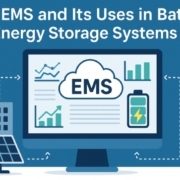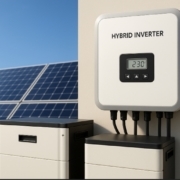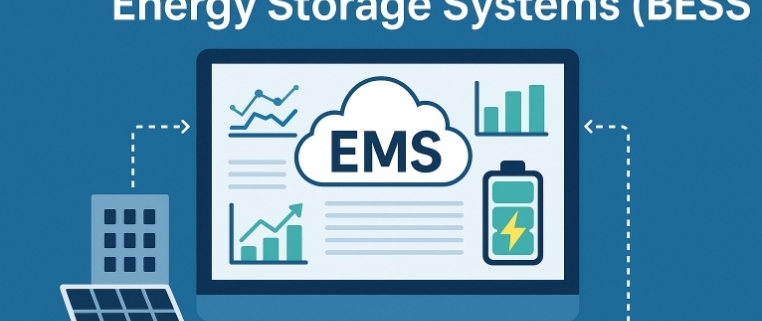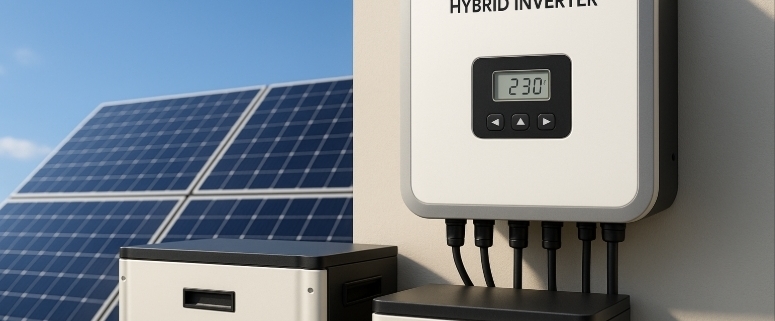In today’s rapidly evolving energy landscape, Battery Energy Storage Systems (BESS) play a crucial role in grid stability and renewable energy integration. But behind every efficient BESS lies a powerful control layer — the Energy Management System (EMS).
Let’s dive into what Energy Management System is and how it transforms the performance of battery storage systems.
What is EMS?
EMS, or Energy Management System, is a software-based control system designed to monitor, manage, and optimize the performance of electrical systems — especially those integrating storage, renewables, and grid power.
It serves as the brain of a BESS, ensuring all energy flows are coordinated, efficient, and responsive to grid demands.
Core Functions of EMS in BESS
The EMS in BESS isn’t just about switching batteries on or off. It handles a wide range of critical tasks that keep energy systems reliable and smart.
1. Energy Flow Optimization
The Energy Management System decides when to:
- Charge the batteries (e.g., during excess solar generation)
- Discharge stored energy (e.g., during peak grid demand)
This timing is optimized to maximize efficiency and reduce operational costs.
2. Load Forecasting and Scheduling
By analyzing load patterns and predicting future demand, Energy Management System schedules charging and discharging in advance. This minimizes power wastage and ensures power availability.
3. Real-time Monitoring and Control
Energy Management System monitors:
This real-time data enables precise control, fault detection, and immediate corrective actions.
4. Integration with Renewable Energy
Energy Management System allows seamless integration of solar and wind systems. It balances intermittency by storing excess energy and supplying it when renewable output drops.
5. Grid Services and Ancillary Support
BESS with EMS can provide:
These services are valuable for utilities and grid operators.
Use Cases of EMS in BESS
Here are a few practical applications where Energy Management System driven BESS systems shine:
⚡ Commercial and Industrial (C&I) Facilities
Energy Management System helps manage peak demand charges, optimize solar self-consumption, and ensure backup during outages.
🌞 Solar + Storage Microgrids
In rural or islanded areas, EMS balances solar input with storage, ensuring 24/7 power without relying on diesel.
🏙️ Utility-Scale BESS Projects
For grid operators, EMS enables large BESS systems to stabilize frequency, support black start capability, and defer costly grid upgrades.
🏢 Smart Buildings and Campuses
Energy Management System in campus-wide energy systems manages building loads, coordinates distributed energy sources, and ensures energy cost savings.
Why EMS is Critical for Future Grids
As energy grids become decentralized and more renewable-driven, EMS becomes indispensable. It allows energy systems to:
- Be more responsive
- Avoid blackouts
- Support carbon-neutral operations
- Generate economic value through smart dispatching
Final Thoughts
In the world of Battery Energy Storage Systems, the Energy Management System is the silent orchestrator — optimizing energy flows, reducing costs, and enabling a sustainable grid. As renewable energy grows, so too will the need for intelligent EMS solutions in every BESS deployment.
FAQs
Q1. Can Energy Management System work without an internet connection?
Yes, local EMS systems can operate autonomously, though cloud connectivity enhances remote monitoring and updates.
Q2. Is Energy Management System hardware or software?
EMS is primarily software but runs on dedicated hardware controllers or integrated edge devices.
Q3. How is EMS different from SCADA?
While SCADA focuses on monitoring and supervisory control, Energy Management System optimizes and automates decision-making processes in energy systems.





